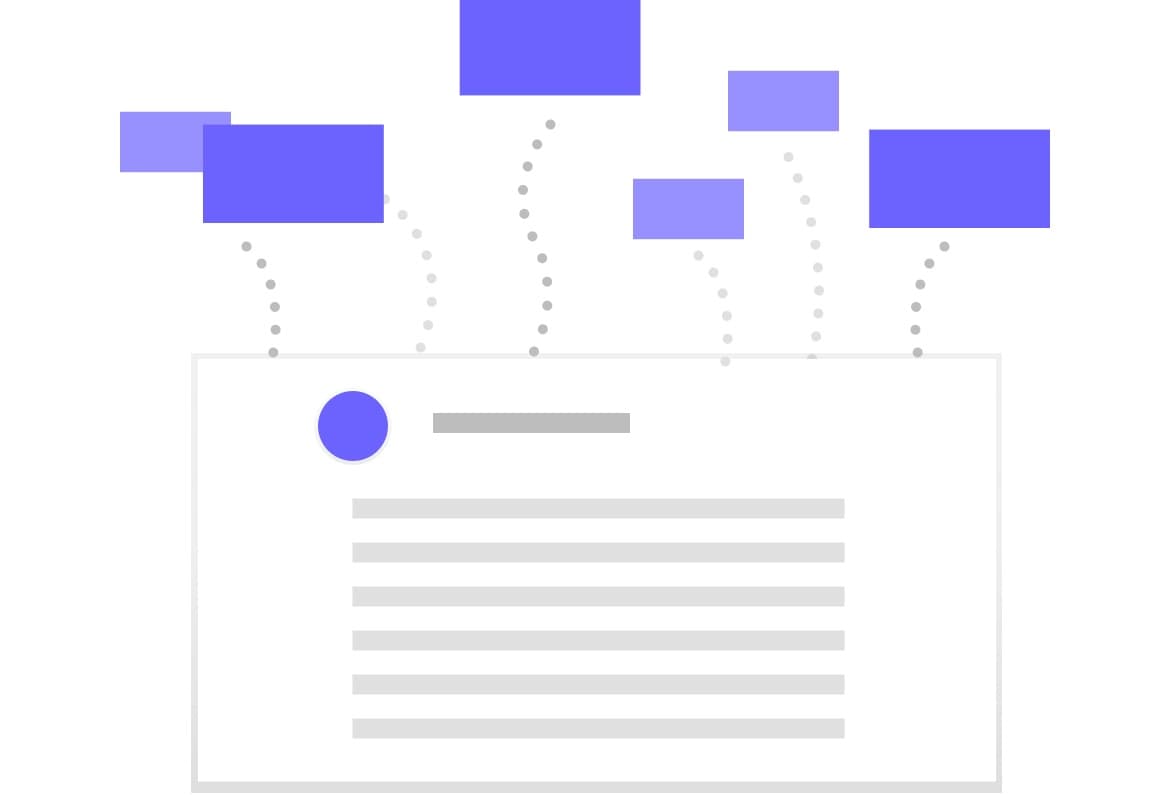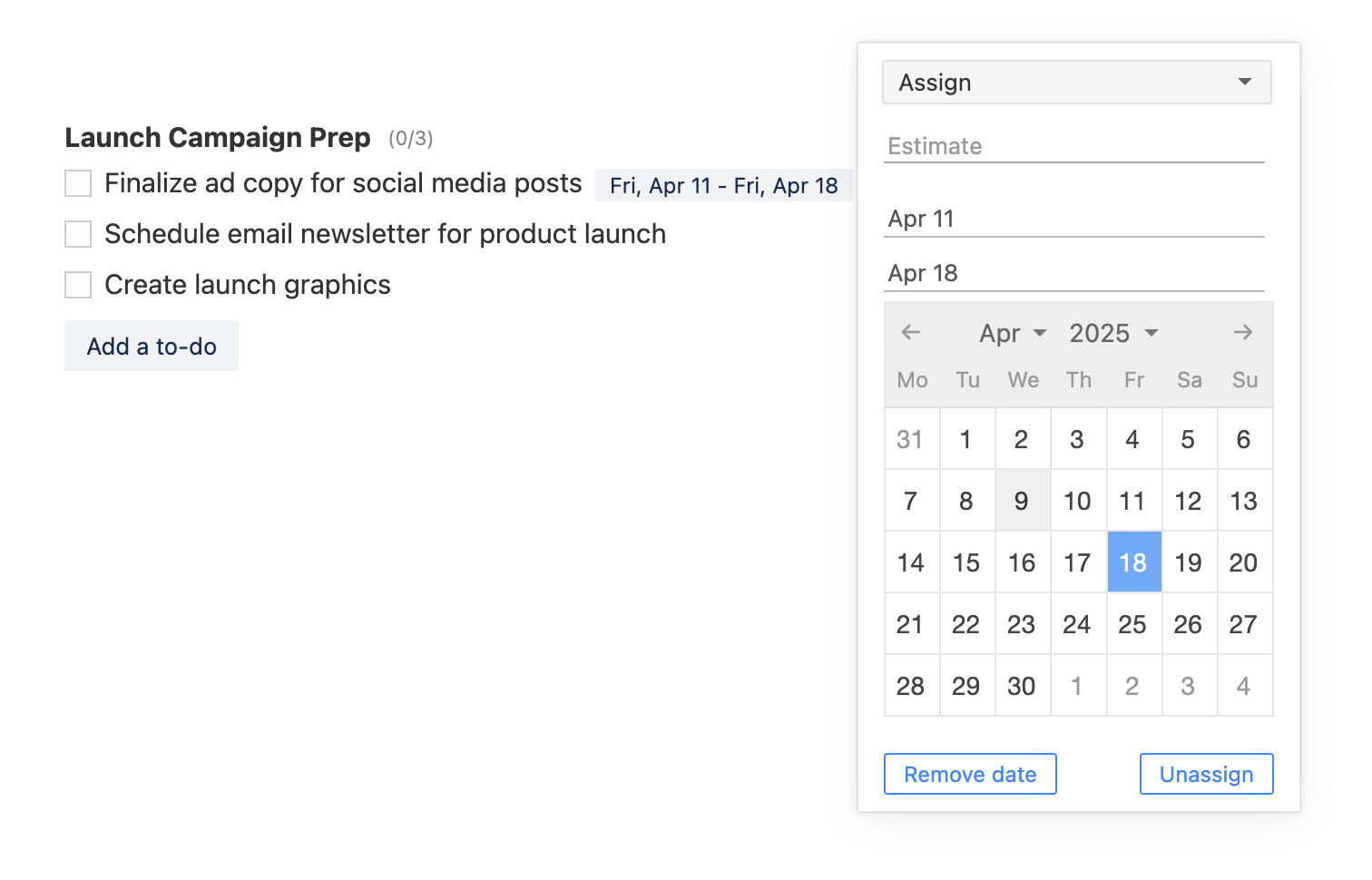5 Reasons You Need A Roadmap To Organize Your Work
What makes a highly efficient team different from others? They use roadmaps!
Even if a team has a great project plan, they must integrate a roadmap. Why? Because it improves their workflow, gives them a competitive edge, and most importantly, aligns their daily grind with the long-term project goals.
Regardless of its type, a roadmap makes sure that the respective body stays connected with a high-level visualization of the bigger picture. Furthermore, it also simplifies the process of implementing a plan and helps turn it into something digestible.
But what’s a roadmap? And why do you or your company need one? That’s precisely what our piece will focus on - along with some other essentials of the term. From the bare definition of a roadmap to why you need it and how to create one, this piece will cover everything.

What’s A Roadmap?
If you search the term “roadmap,” you’ll find two meanings. Number one, a map, especially one designed for motorists, showing the roads of a country or area. And secondly, a plan or strategy intended to achieve a particular goal.
Now, if we squash the two meanings into one, the true meaning of roadmap will start falling into place. For individual professionals and those working in teams, the roadmap is a form of a plan that shows the way (or road) to achieve a particular goal.
A roadmap is just like a bird’s eye view of a goal one is trying to achieve. With the help of a roadmap, a team or a person can easily achieve a goal or a desired outcome. Without a roadmap you may get lost along the way and end up achieving nothing.
You can think of a roadmap like a step-by-step guide to achieving a particular goal or outcome. But instead of highways and road names, it is packed with specific dates, sub-actions, and more detail to every step. Roadmaps help all the people who are connected with a particular end-goal to stay on the same page.
A roadmap helps to eliminate the gamble of relying on the future without any solid plan. Lastly, it motivates and drives the people connected with it to stay aligned and on the right path for achieving greatness.
Now we’ll break down the term roadmap - personal and product/business roadmaps.
What’s A Personal Roadmap?

As suggested by the name, a personal roadmap is anything that’s linked to your personal life. Health, fitness goals, retirement plan, and others will fall in the category of personal roadmap.
A personal roadmap will help you to accomplish a given goal. You can create your personal roadmap just like you write directions to a particular place. Personal roadmaps usually have deadlines, targets, and other useful things to help you reach a specific goal.
Personal roadmaps are all about you and your goals. Maybe someone else can act as a cameo in those personal roadmaps, but overall, they are about you and you only. For instance, you can make a roadmap to shed 20 lbs in four months. During the roadmap, your trainer can help you achieve your goal; however, it would still be considered a personal roadmap.
People make personal roadmaps to improve their lives. And as we all know, the most common time for making personal roadmaps is around the new year. A roadmap works just like a GPS navigator, helping you reach a specific destination or goal that you have set for yourself.
We all make personal roadmaps to better our lives. But companies and firms also build roadmaps to achieve a business plan or create a product from the ground up—more on that in the next section.
What’s A Product or Business Roadmap?

When the product or business plan fails and nothing’s going right, there’s only one place to go: a roadmap. Although the business/product plan is a go-to choice for jotting down actions, a roadmap can take an organization to a whole new level.
But what makes a plan different from a roadmap? It’s the higher-level visualization of your business/product’s big picture. Apart from that, the wheres and hows of a plan and a roadmap are somewhat the same.
A business roadmap illustrates the major and minor objectives, deadlines, and roles for each department. Besides, what makes a business roadmap stands out is its high-level visualization that’s easy on the eye and digestible by all the members who are connected to a specific goal.
Unlike a project plan covering the slightest detail, a product/business roadmap keeps the plan relevant, simple, and straightforward. A business roadmap speeds up the process of completing the end goal as it’s a refined and focused version of the project plan.
For instance, if your company is developing a product, a roadmap will help different sectors like sales, marketing, and operations, to have a bird-view of their responsibilities, deadlines, and other milestones.
A business roadmap will help project managers to clear the irrelevant processes and extra balls in the air. Plus, they make a streamlined workflow for every individual sector that includes key goals, plans of action, and deadlines.
Up to now, we have covered two things - what’s a roadmap and its two basic types. As for this piece, we are more concerned with a product/business roadmap. So, we’ll be showcasing five reasons why you need a roadmap in the following section.
5 Reasons You Need A Roadmap

Drives Awareness
One of the reasons project managers builds a roadmap is that it drives awareness. Because the roadmap set clear visions, expectations, deadlines, and milestones, it helps the team to stay aware.
When everyone on the team will be able to see the high-level visualization of the business plan clearly, it will drive awareness. This awareness will lead your team to accomplish their duties by or before the deadline.
Another thing that awareness will bring to the table is staying ahead of time. Lastly, you and your team will be well aware of the hurdles and exceptions before they arrive.
Makes Communication Easy With Stakeholders
Most stakeholders aren’t technical, but they require teams to provide them with an easy-to-digest insight into everything that’s going on. With roadmaps, it gets easier for teams to deliver key news to internal and external stakeholders.
Since roadmaps aren’t complex, delivering essential information to stakeholders becomes simple and straightforward. All you need to do to deliver the right information to stakeholders is just present them with the completed bullet points on your roadmap software solution. Lastly, stakeholders also get to contribute and share their points of view and key ideas.
Keeps Everyone On Track
A roadmap is built with steps that lead to a specific goal or destination and it helps the people who are connected to it to stay on track. Unlike project plans where team members forget their direction by getting caught up in completing day-to-day tasks, a roadmap keeps everyone working in pursuit of the collective goal.
The roadmap gives its followers a clear vision to stay on the right path. Furthermore, it works like a compass and makes sure that anytime someone picks it up, it shows the individual the right direction.
Reveal Gaps
Another reason to create a roadmap is that it reveals gaps. Regardless of what you and your team are trying to achieve, making a roadmap helps you to identify the gaps and act accordingly.
Whether your team is working on a product from the ground-up or trying to multiply business growth, a roadmap helps to reveal gaps. This helps your team to prepare for the problems that might arrive at the point where there’s no turning back.
When you and your team will know about the loopholes and gaps, it will come in handy to look for solutions early.
Gives Everyone A Clear Sight
Finally, road mapping helps everyone on the team to get a clear sight of everything that’s going on. From marketing to operations and business sectors, everyone knows what’s up and what’s going on.
With a roadmap, it gets easy for the people working in a team to carry out their tasks. Moreover, everyone knows what their next task is and how it’s contributing to the bigger picture.
Lastly, when everyone has a clear sight and a bird-eye view of the final destination, it makes them more productive.
Roadmap vs Timeline
Roadmap and timeline are often used together, but they are two different things. A roadmap is a detailed view of an end goal. Whereas the timeline focuses on specific goals showing start dates, end dates, resources, and dependencies.
You can think of a timeline as a tiny roadmap that is based on various small tasks. On the other side, a roadmap is the full-fledged, high-level view of a specific project or end goal.
A timeline helps a team on the task level. It assists the team in managing the start and end dates, resources, and other dependencies. In contrast, a roadmap just gives a compact and basic view of accomplishing an end goal.
But roadmap and timeline are both necessary for building a business plan, strategy, or product. By creating a project timeline, you get to align the tasks on hand along with start/due dates, resources, and everything in between. Lastly, a roadmap gives a compact plan on how to reach a final destination with all of the key components listed.
Just a reminder, we have covered the reasons you need a roadmap and how the timeline differs from the roadmap. Now, we’ll cover how you can create a roadmap to help your team a difference.
How To Create A Roadmap

Creating a roadmap requires you to work your way through four things why, when, what, and how. Now let’s break down these four things and see how they can help you and your team create a roadmap.
Why
When setting up a roadmap, you first need to ask yourself and your team that why you are building it. The whyquestion will help to set a certain vision and a target. After you know why you are setting up a roadmap in the first place, the next stages will come easily.
When
Once you are done setting a final goal, it’s time to set up the dates. The dates will help you and your team to stay aligned with the goal.
What
Whatsare the goals, milestones, and accomplishments you are looking to achieve (keeping in mind the end goal). The targets should be incremental, achievable, and shouldn’t overwhelm you and your team members.
How
The last step is to define how you are going to achieve the sub-goals in accordance with the dates and the final goal. We would recommend you include your team members in this process so that everyone stays on the same page from the start.
We live in the 21st century, and long gone are the days where roadmaps were made on paper. Today, companies make use of project management tools to create roadmaps. Breeze is one of the most popular project management tools that help your team to stay on-plan. Recently, Breeze has introduced the projects roadmap feature. Let’s see how you can use Breeze and its new feature to create roadmaps.
Roadmaps In Breeze

The roadmap feature on Breeze works just like a normal project board. Instead of detailed tasks, you get to see the basics of your projects. With the Roadmap feature on Breeze, you can drag and drop projects, add new lists, retrieve basic information, and everything in between.
Some basic rules of the roadmap feature in Breeze are that they aren’t visible to clients, and admin users have the power to switch off the feature, allowing them to set user access.
Roadmaps at Breeze are fully customizable so that you can flexibly use them in your own creative ways!
Conclusion
Creating a roadmap for your projects, business plans, etc., is now easier than ever with Breeze’s roadmap feature. Creating roadmaps in Breeze will assist you and your team to view a detailed picture of your projects.
Roadmaps have revolutionized the way teams used to plan. With project management tools like Breeze, it’s now even more straightforward to set-up roadmaps for your projects.








